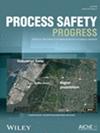安全的组织控制:社会经济和自然环境的挑战
IF 1
4区 工程技术
Q4 ENGINEERING, CHEMICAL
引用次数: 0
摘要
案例在人为因素(HFs)、风险、可靠性和危机中的概念和应用,包括对复杂系统和难以预测的社会技术系统的分析。规则和障碍的设计或修改是为了实现更好的组织效率结果。然后,调查评估诸如基础之类的概念,诸如确认之类的测试,诸如方法和工具之类的算法,以及表明获得良好结果的确定性的验证。人为因素(HE)是设计的一部分,可以禁用或启用危险能量的流动。其目的是让安全文化和技术设计中的这些he充当保障措施。HE避免了设计上的缺陷,包括社会缺陷和物理缺陷。他可以减少负载超过电阻容量。文化、社会现象、公司项目、管理层和员工、团队和工人、操作控制、故障控制、事故和灾害都是转化危害能量的高频类型,需要高效的高频屏障。这些讨论后的内部和外部规则需要修改其原则,以纠正标准化和组织沟通的过程,这将改变团队建设的程序和技术项目的标准。改进方案包括调查经验教训和行为治疗。本文章由计算机程序翻译,如有差异,请以英文原文为准。
Organizational control for safety: A challenge in socioeconomic and natural environment
Abstract The concepts and applications of cases in human factors (HFs), risk, reliability, and crisis, include the analysis of complex systems and difficult to predict sociotechnical systems. Rules and barriers are designed or revised to achieve better organizational efficiency results. The investigation then valuates the concepts such as the basis, the tests such as confirmation, the algorithms such as methods and tools, and the validation that indicates the certainty of achieving good results. The human elements (HE) are part of the design and can either disable or enable the flow of hazard energy. The intention is that these HEs inside the safety culture and technology design act as safeguards. The HE avoids design deficiencies, social and physical. HE can reduce load over the resistance capacity. The culture, social phenomenon, company project, management and staff, group and worker, operational control, failure control, and accident and disaster are classes of HF that transform hazard energy and need efficient HE barriers. The internal and external regulation after these discussions needs to revise its principles to correct processes of standardization and organizational communication, which would change the procedures for team building and the criteria for the technology project. An improvement program includes investigation of lessons learned and behavior treatment.
求助全文
通过发布文献求助,成功后即可免费获取论文全文。
去求助
来源期刊

Process Safety Progress
工程技术-工程:化工
CiteScore
2.20
自引率
10.00%
发文量
99
审稿时长
6-12 weeks
期刊介绍:
Process Safety Progress covers process safety for engineering professionals. It addresses such topics as incident investigations/case histories, hazardous chemicals management, hazardous leaks prevention, risk assessment, process hazards evaluation, industrial hygiene, fire and explosion analysis, preventive maintenance, vapor cloud dispersion, and regulatory compliance, training, education, and other areas in process safety and loss prevention, including emerging concerns like plant and/or process security. Papers from the annual Loss Prevention Symposium and other AIChE safety conferences are automatically considered for publication, but unsolicited papers, particularly those addressing process safety issues in emerging technologies and industries are encouraged and evaluated equally.
 求助内容:
求助内容: 应助结果提醒方式:
应助结果提醒方式:


